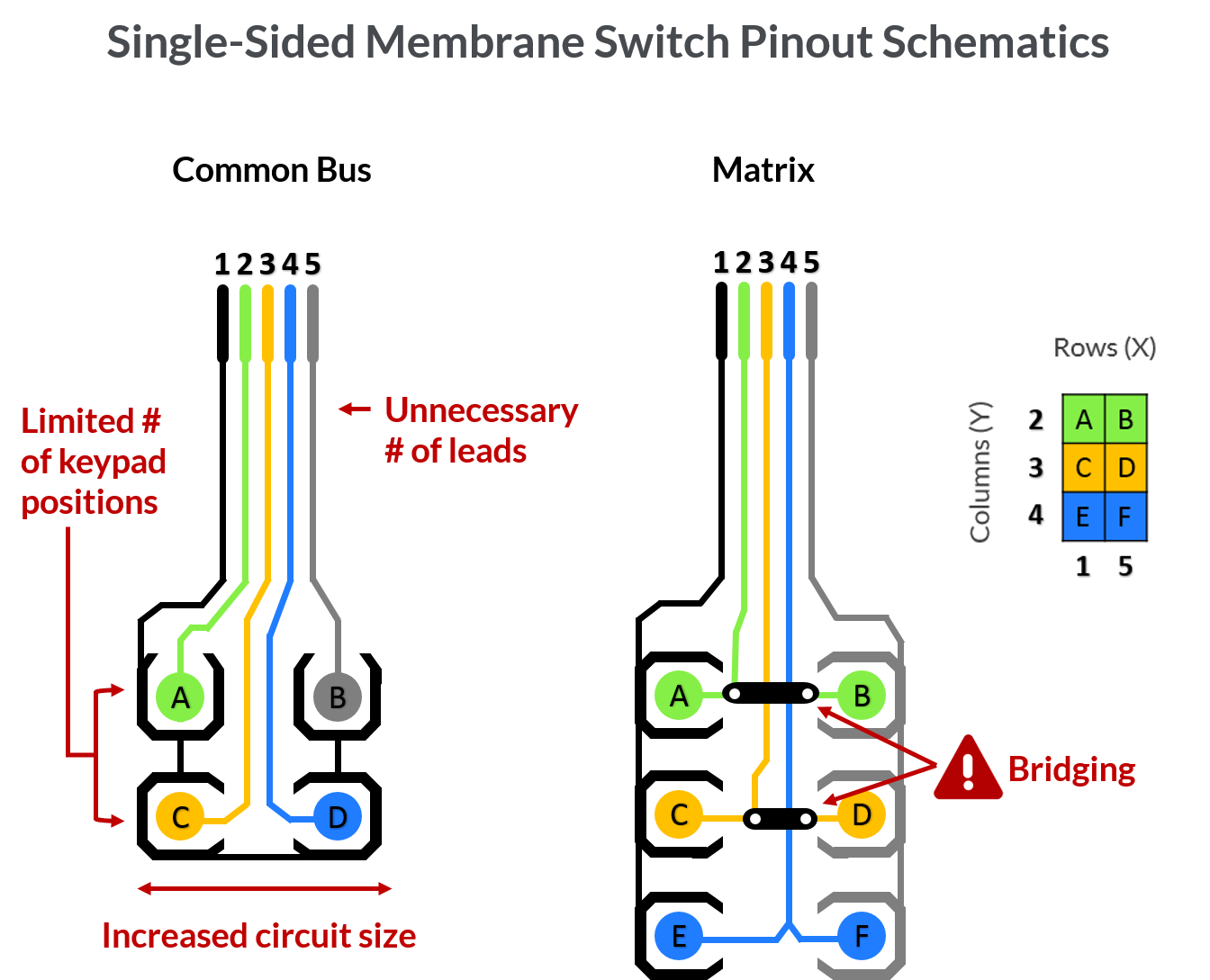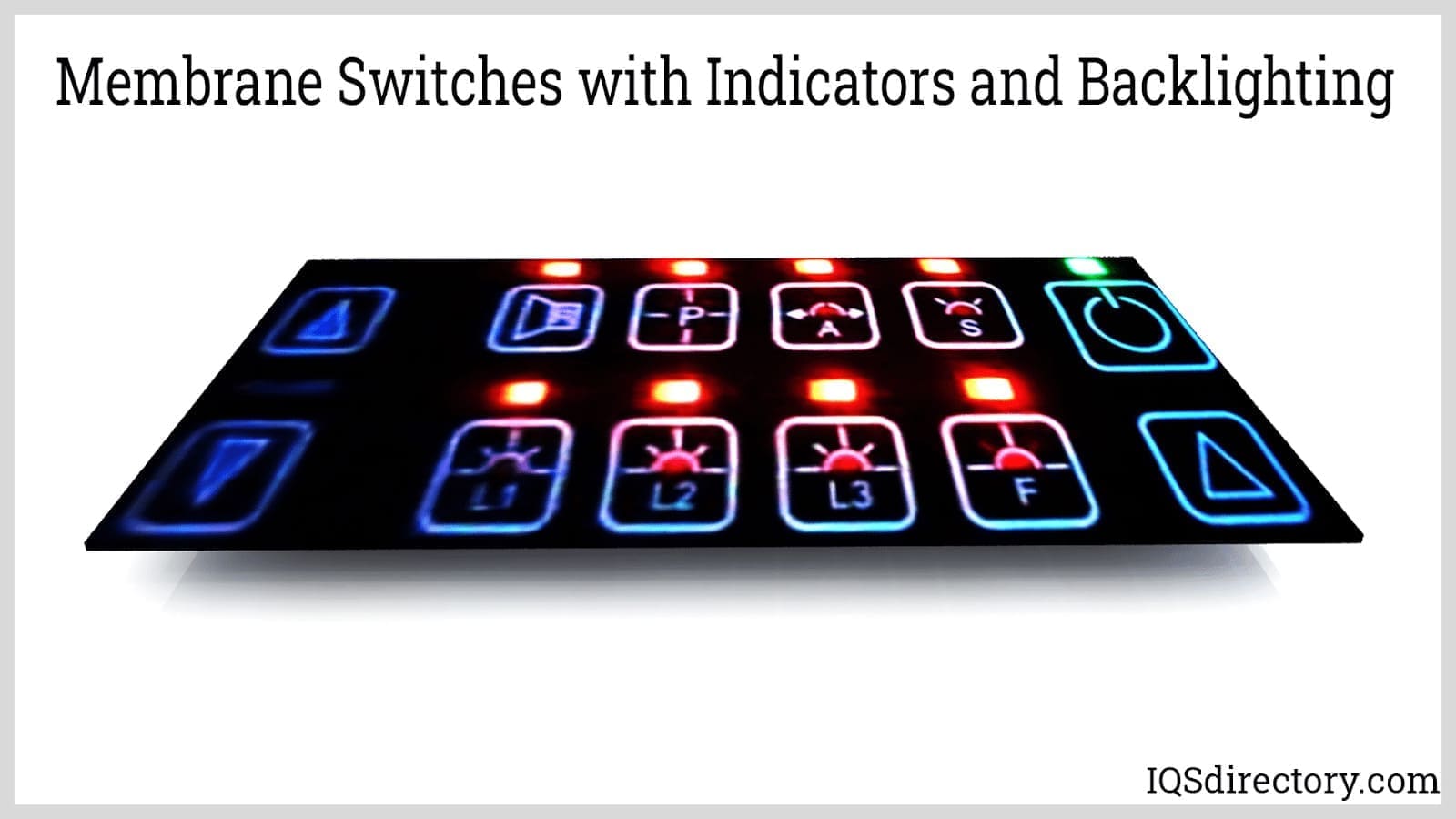Recognizing the Importance of Membrane Change in Modern Electronic Devices
Membrane switches are integral components in contemporary electronic tools. They use a mix of performance and design that boosts user communication. Their long lasting and lightweight nature makes them suitable for different applications. As sectors progress, the need for customization and advanced attributes grows. Recognizing exactly how membrane layer switches over contribute to development discloses their significance in forming the future of electronics. What lies in advance for this modern technology?
The Basics of Membrane Change Technology
Typically ignored, membrane layer switch innovation plays a vital duty in the contemporary electronics landscape. These gadgets, made up of numerous layers, work as user interfaces for various digital items, varying from house home appliances to clinical equipment. A typical membrane layer button is composed of a visuals overlay, a spacer layer, and a circuit layer, which are meticulously put together to create a functional interface.When pressure is put on the overlay, the circuit layer is completed, permitting signals to be sent to the gadget. This innovation is understood for its flexibility, making it possible for customization in layout, capability, and shape to fulfill details individual demands. Furthermore, membrane layer buttons are lightweight and thin, making them ideal for applications where room is a costs. Their durability and resistance to environmental elements additionally boost their charm, guaranteeing they can endure extreme problems while keeping capability. Overall, membrane button innovation is important to creating easy to use and reliable digital devices

Secret Benefits of Membrane Switches
Membrane layer switches over offer numerous vital benefits that make them a recommended choice in different digital applications. Their design enables a portable form element, making it possible for manufacturers to develop sleek and light-weight devices. Furthermore, membrane layer buttons are resistant to dust, dampness, and chemicals, which boosts their longevity and durability popular settings. The responsive feedback provided by these buttons can boost customer experience, making them very easy and user-friendly to operate.Furthermore, membrane buttons can be customized with diverse graphics and colors, enabling unique branding possibilities. The production procedure is usually cost-effective, especially for high-volume manufacturing, as it reduces assembly time and streamlines design. Ultimately, membrane layer switches over call for marginal maintenance, adding to reduced overall operational prices. These benefits highlight their growing appeal in modern electronics, where integrity and easy to use interfaces are important.

Applications Throughout Numerous Industries
The convenience of membrane changes enables their widespread fostering throughout different sectors. In the clinical area, they are typically made use of in analysis devices and patient tracking systems, providing a long lasting interface resistant to contaminants. The automotive market makes use of membrane switches for dashboard controls, enhancing individual experience with streamlined styles that endure rough problems. In consumer electronic devices, they offer as control panels for gadgets such as microwaves and coffee machine, offering a straightforward interface that is very easy to tidy. The aerospace sector utilizes membrane layer switches in cabin controls, where integrity and space efficiency are paramount. Furthermore, the commercial market leverages these buttons in machinery and control systems to guarantee robust operation sought after settings. This wide variety of applications emphasizes the versatility of membrane buttons, making them integral components in improving capability and user communication across varied technological landscapes.
Modification and Layout Adaptability

Future Fads in Membrane Layer Switch Advancement
Arising trends in membrane button growth suggest a growing emphasis on boosted functionality and combination with wise innovations. As customer demand for a lot more innovative electronic gadgets increases, manufacturers are focusing on developing membrane layer changes that not only serve basic functional roles however likewise incorporate features like touch sensitivity, backlighting, and haptic feedback.Furthermore, developments in products are anticipated to improve toughness and environmental resistance, making membrane layer switches over ideal for diverse applications in markets such as health care, auto, and customer electronic devices. The assimilation of capacitive touch technology is likely to her explanation become extra prevalent, enabling for sleeker styles and enhanced customer interfaces. membrane switch.Additionally, the surge of the Internet of Points (IoT) is motivating the growth of membrane layer changes that can communicate wirelessly with other devices, boosting interconnectivity. Generally, the future of membrane layer button innovation appears appealing, driven by development and the pursuit of easy to use remedies
Regularly Asked Concerns
How Do Membrane Switches Over Compare to Typical Mechanical Buttons?
Membrane layer buttons, being a lot more space-efficient and providing a streamlined layout, contrast with traditional mechanical switches that offer tactile responses. The previous usually include adjustable graphics, while the latter commonly assure durability and integrity in different applications.
What Materials Are Typically Made Use Of in Membrane Switch Over Manufacturing?
Membrane buttons are normally created utilizing materials such as polyester, polycarbonate, and published conductive inks. These products give resilience, flexibility, and responsiveness, making them ideal for numerous applications in digital gadgets and interface.
Can Membrane Layer Changes Be Repaired or Recycled?
Membrane layer buttons can commonly be fixed, specifically if small issues arise, such as adhesive failure or surface area damages. Nevertheless, complete reuse is generally limited as a result of put on and prospective degradation of materials over time.
Just How Do Ecological Aspects Impact Membrane Layer Change Performance?
Ecological variables, such as direct exposure, humidity, and temperature level to chemicals, substantially affect membrane Get More Information layer button efficiency. Severe problems can bring about deterioration, influencing responsiveness and long life, inevitably jeopardizing the performance of the gadget in various applications.
What Is the Typical Lifespan of a Membrane Layer Change?
The common life-span of a membrane button generally varies from 1 to 5 million actuations, relying on aspects such as use regularity, environmental problems, and the materials used in manufacturing, affecting toughness and efficiency longevity. A regular membrane layer switch consists of a visuals overlay, a spacer layer, and a circuit layer, which are carefully assembled to create a practical interface - membrane switch.When pressure is applied to the overlay, the circuit layer is finished, allowing signals to be transferred to the gadget. The tactile feedback given by these buttons can boost user experience, making more tips here them intuitive and easy to operate.Furthermore, membrane switches can be customized with diverse graphics and colors, allowing for unique branding possibilities. As customer need for a lot more innovative digital gadgets rises, producers are focusing on developing membrane switches over that not only serve standard functional functions but likewise include attributes like touch level of sensitivity, backlighting, and haptic feedback.Furthermore, advancements in materials are anticipated to improve sturdiness and ecological resistance, making membrane layer changes ideal for varied applications in sectors such as health care, automotive, and customer electronics. The integration of capacitive touch technology is most likely to end up being much more widespread, allowing for sleeker layouts and improved customer interfaces.Additionally, the surge of the Net of Things (IoT) is motivating the development of membrane changes that can connect wirelessly with other tools, enhancing interconnectivity. Membrane layer switches, being a lot more space-efficient and offering a sleek layout, contrast with standard mechanical buttons that provide tactile responses